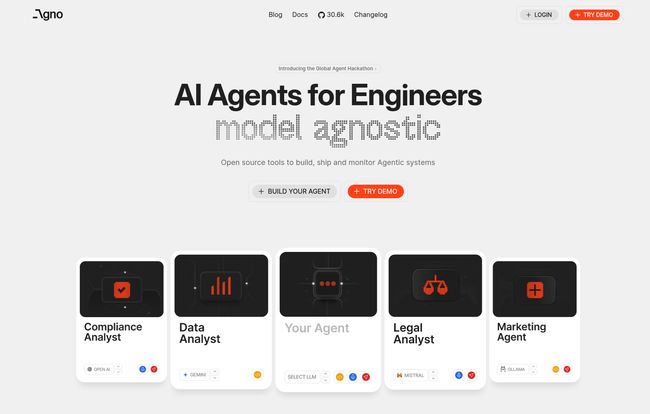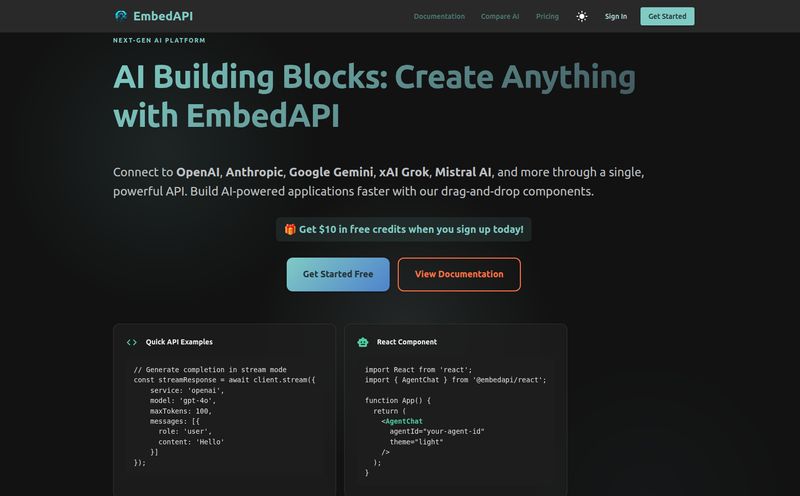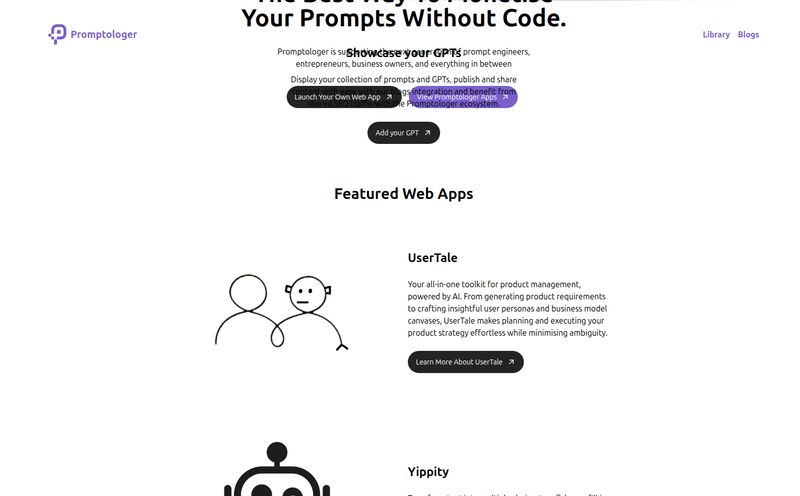The world of AI development is moving at a breakneck speed. One minute, you’re finally getting the hang of one API, and the next, a shiny new LLM drops that promises to solve all of life's problems. It's exciting, sure, but it's also a bit… chaotic. For engineers and developers, this means the constant threat of being locked into one ecosystem, rewriting code, and trying to duct-tape different services together to build something truly intelligent.
I’ve been in the trenches of SEO and traffic generation for years, and I've watched this AI wave build. I've seen tools come and go. Some promise the world and deliver a pamphlet. So when I stumbled upon Agno, with its clean interface and bold claims, my curiosity was definitely piqued. Their tagline? "AI Agents for Engineers." Okay, you have my attention. They’re promising an open-source way to build, ship, and monitor AI agents that aren’t tied to a single model. Sounds like a dream, right? But is it the real deal?
So, What Exactly is Agno?
Think of Agno as a sophisticated LEGO set for creating AI agents. It’s a lightweight, open-source library designed to give you, the builder, all the necessary blocks to create something amazing without forcing you to use only their branded bricks. At its heart, Agno is a framework that lets you build agentic systems. These aren't your simple question-and-answer chatbots. We're talking about AI agents that can think, remember past conversations, use external tools, and access specific knowledge bases to perform complex tasks.
The platform is built around a simple, powerful idea: Build, Ship, and Monitor. You get the tools to code your agent, deploy it to the cloud, and then (soon, anyway) keep an eye on its performance. The whole process seems designed to take some of the chaos out of AI development and put the power back in the hands of engineers.
The Features That Actually Matter
Let's get into the meat and potatoes. What makes Agno stand out in a sea of AI tools? For me, it boils down to a few core strengths.
Finally, True Model Freedom
This is the big one. Agno is model-agnostic. That means you’re not handcuffed to OpenAI, Google, Mistral, or anyone else. You can swap LLMs in and out as you please. This is huge. It future-proofs your work. Found a new model that’s better or more cost-effective for your specific task? No problem. Just plug it in. This freedom from vendor lock-in is something developers have been clamoring for, and Agno delivers it front and center. You can see it right on their homepage: a lineup of different LLM providers, ready to be turned into an agent.
Giving Your Agents a Brain
A standard LLM call is stateless. It has no memory of your last conversation. Agno changes that with built-in memory and knowledge integration. You can give your agents long-term memory to create truly personalized, continuous conversations. More than that, you can feed them specific documents, data, or domain-specific information. Imagine a legal analyst agent that has ingested your entire firm's case history or a marketing agent that knows your brand's style guide inside and out. That's what we're talking about here.
It also allows for tool integration. Need your agent to search the web, make a payment through an API, or run an SQL query? You can equip it with the right tools to interact with the outside world, turning it from a simple conversationalist into a functional assistant.
A Developer-First, Open-Source Spirit
Being open-source isn't just a buzzword; it's a philosophy. It means transparency, community collaboration, and no hidden agendas. Agno’s lightweight nature also means it’s designed for performance and scale. You're not dealing with a bloated, clunky platform. The code snippets they show look clean and straightforward, which is always a good sign for developers who just want to get things done without fighting the framework.
What's the Price of Freedom?
This is often the make-or-break question. I was pleasantly surprised here. Agno operates on a freemium model that seems incredibly fair, especially for developers and small teams looking to experiment.
| Plan | Features | Cost |
|---|---|---|
| Free | The core framework for building agents. | Free |
| Pro | Advanced monitoring and optimization tools. | Coming Soon |
| Enterprise | Tailored features, support, and deployment options. | Book a Call |
Getting the entire building framework for free is a fantastic way to get developers in the door. You can build, test, and deploy agents without spending a dime on the tool itself (you'll still pay for your LLM usage, of course). The Pro plan, focused on monitoring, looks like a logical next step for when you move from a project to a product.
The Other Side of the Coin
No tool is perfect, especially not a new one. To give you the full picture, here are a few things to keep in mind. Agno is for engineers. If you're not comfortable with code, this isn't a no-code drag-and-drop builder. You'll need some technical chops to get started.
Also, some of the most exciting features, particularly around monitoring and optimization (like tracking hallucinations, token usage, and quality), are still marked as "COMING SOON." This isn't a deal-breaker, but it means the platform is still growing. The full end-to-end vision isn't quite there yet, but the foundation is incredibly strong. Lastly, while they mention cloud deployment, if you have a complex setup, you might need to do a bit of extra configuration. It's not a one-click-and-forget-it solution for every possible use case.
Frequently Asked Questions About Agno
Let's tackle some common questions I've seen pop up.
What is Agno in simple terms?
Agno is an open-source toolbox for developers to build powerful AI assistants. It lets you choose any AI model you want (like GPT-4 or Gemini), give your assistant memory, and connect it to other apps and tools.
Is Agno really free to use?
Yes, the core framework for building agents is completely free. You can download the library and start building right away. They will have paid plans in the future for advanced features like monitoring and for enterprise customers.
Which Large Language Models (LLMs) does Agno support?
It's designed to be model-agnostic, so it supports all the major players. This includes models from OpenAI, Google (Gemini), Mistral, Llama, Anthropic, and AWS. You're not locked into a single provider.
Who is the ideal user for Agno?
Agno is built for engineers, developers, and technical teams who want to create custom AI agents. If you're comfortable writing code and want fine-grained control over your AI applications, this tool is for you.
What makes it different from other AI agent builders?
The two biggest differentiators are its model-agnostic approach, which gives you incredible flexibility, and its lightweight, open-source nature. It's less of a restrictive platform and more of a powerful, unopinionated framework.
My Final Verdict on Agno
So, where do I land on Agno? I'm genuinely excited. It feels like a tool built by engineers who understand the real-world frustrations of other engineers. It's not trying to be a magical, one-size-fits-all solution. Instead, it’s providing a robust, flexible, and open foundation to build upon. The model-agnostic philosophy alone is worth its weight in gold in today's market.
Yes, it's still evolving, and you need to be comfortable with code to use it. But for the right audience, Agno looks like it could become an indispensable part of the modern AI development stack. It’s a bet on openness, flexibility, and developer freedom—and in my book, that's a pretty good bet to make.




